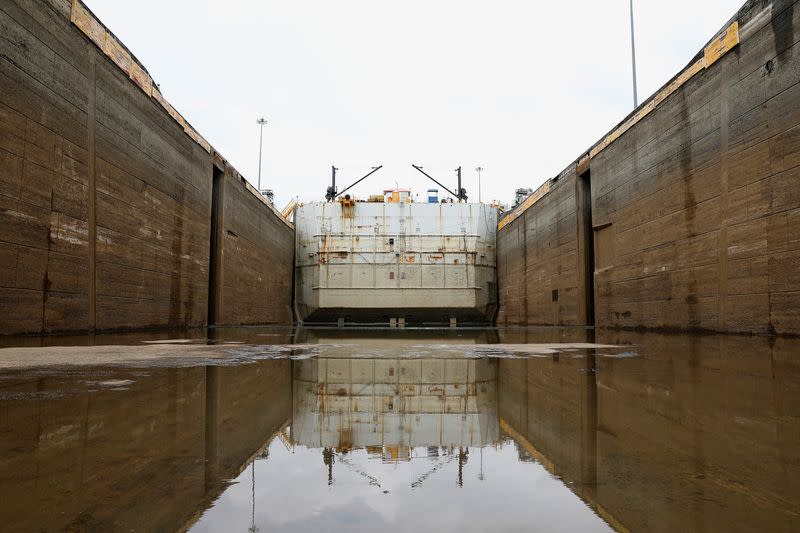Panama Canal drought could threaten supply chain, S&P says

By Marion Giraldo
MEXICO CITY (Reuters) - The severe drought which has forced the Panama Canal, one of the world's busiest trade passages, to limit daily crossings could impact global supply chains during a period of high demand, S&P Global said on Wednesday.
The canal has imposed several restrictions since 2023, though last month the Panama Canal Authority bumped up daily crossings to 27, from 24, as water levels rose at the man-made Gatun Lake which feeds into the canal.
"Capacity pressures at the Panama Canal are starting to have an effect on supply chains," S&P Global said in an analyst report on transportation of cargo and raw materials. "Container ships have yet to feel the impact in light of their priority status, although the situation is changing."
Container ships have priority to pass through the Panama Canal, but transit restrictions have hurt other categories, particularly bulk carriers.
If rains return in May as expected, the canal authority plans to ramp daily slots back up to about 36 per day, the average during rainy season.
The need to maintain water levels at the reservoirs feeding into the canal has prevented it from absorbing demand from shippers seeking alternative routes away from the Red Sea, where Houthi attackers have blocked the passage of ships in the Suez Canal, the world's busiest waterway.
(Reporting by Marion Giraldo; Writing by Kylie Madry; Editing by Richard Chang)

 Yahoo Finance
Yahoo Finance 